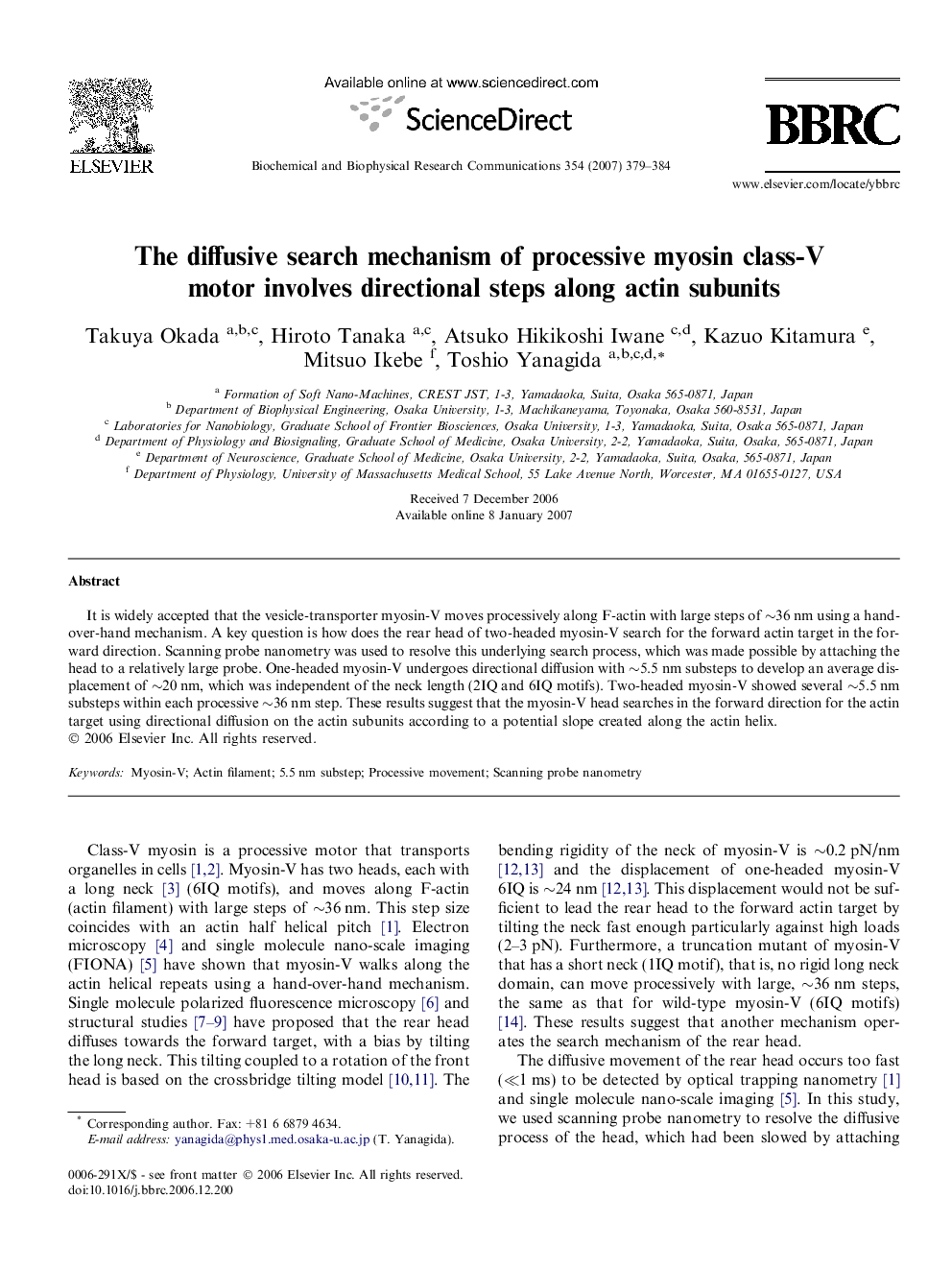| Article ID | Journal | Published Year | Pages | File Type |
|---|---|---|---|---|
| 10767419 | Biochemical and Biophysical Research Communications | 2007 | 6 Pages |
Abstract
It is widely accepted that the vesicle-transporter myosin-V moves processively along F-actin with large steps of â¼36Â nm using a hand-over-hand mechanism. A key question is how does the rear head of two-headed myosin-V search for the forward actin target in the forward direction. Scanning probe nanometry was used to resolve this underlying search process, which was made possible by attaching the head to a relatively large probe. One-headed myosin-V undergoes directional diffusion with â¼5.5Â nm substeps to develop an average displacement of â¼20Â nm, which was independent of the neck length (2IQ and 6IQ motifs). Two-headed myosin-V showed several â¼5.5Â nm substeps within each processive â¼36Â nm step. These results suggest that the myosin-V head searches in the forward direction for the actin target using directional diffusion on the actin subunits according to a potential slope created along the actin helix.
Keywords
Related Topics
Life Sciences
Biochemistry, Genetics and Molecular Biology
Biochemistry
Authors
Takuya Okada, Hiroto Tanaka, Atsuko Hikikoshi Iwane, Kazuo Kitamura, Mitsuo Ikebe, Toshio Yanagida,
